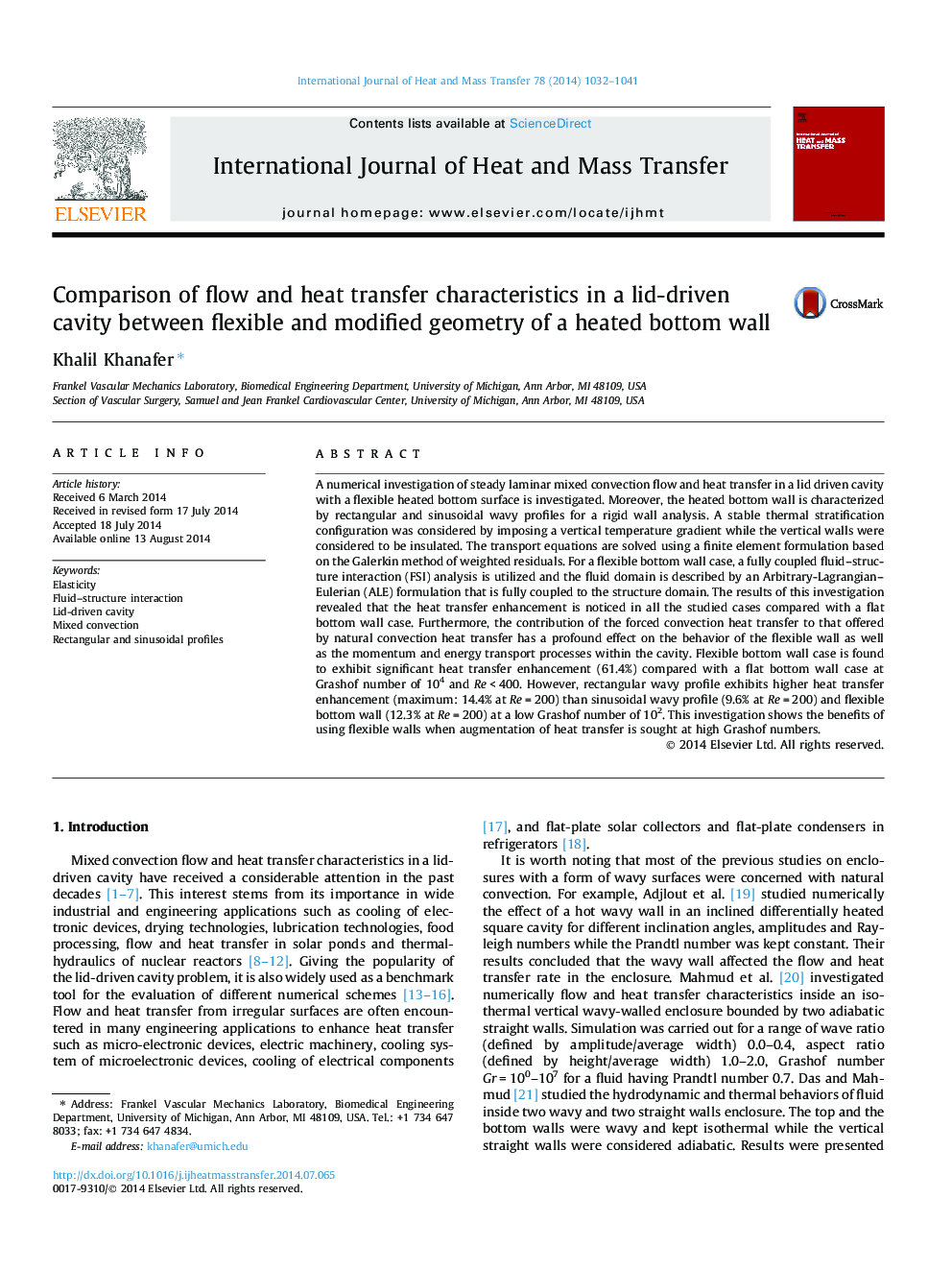| کد مقاله | کد نشریه | سال انتشار | مقاله انگلیسی | نسخه تمام متن |
|---|---|---|---|---|
| 657766 | 1458064 | 2014 | 10 صفحه PDF | دانلود رایگان |
A numerical investigation of steady laminar mixed convection flow and heat transfer in a lid driven cavity with a flexible heated bottom surface is investigated. Moreover, the heated bottom wall is characterized by rectangular and sinusoidal wavy profiles for a rigid wall analysis. A stable thermal stratification configuration was considered by imposing a vertical temperature gradient while the vertical walls were considered to be insulated. The transport equations are solved using a finite element formulation based on the Galerkin method of weighted residuals. For a flexible bottom wall case, a fully coupled fluid–structure interaction (FSI) analysis is utilized and the fluid domain is described by an Arbitrary-Lagrangian–Eulerian (ALE) formulation that is fully coupled to the structure domain. The results of this investigation revealed that the heat transfer enhancement is noticed in all the studied cases compared with a flat bottom wall case. Furthermore, the contribution of the forced convection heat transfer to that offered by natural convection heat transfer has a profound effect on the behavior of the flexible wall as well as the momentum and energy transport processes within the cavity. Flexible bottom wall case is found to exhibit significant heat transfer enhancement (61.4%) compared with a flat bottom wall case at Grashof number of 104 and Re < 400. However, rectangular wavy profile exhibits higher heat transfer enhancement (maximum: 14.4% at Re = 200) than sinusoidal wavy profile (9.6% at Re = 200) and flexible bottom wall (12.3% at Re = 200) at a low Grashof number of 102. This investigation shows the benefits of using flexible walls when augmentation of heat transfer is sought at high Grashof numbers.
Journal: International Journal of Heat and Mass Transfer - Volume 78, November 2014, Pages 1032–1041
